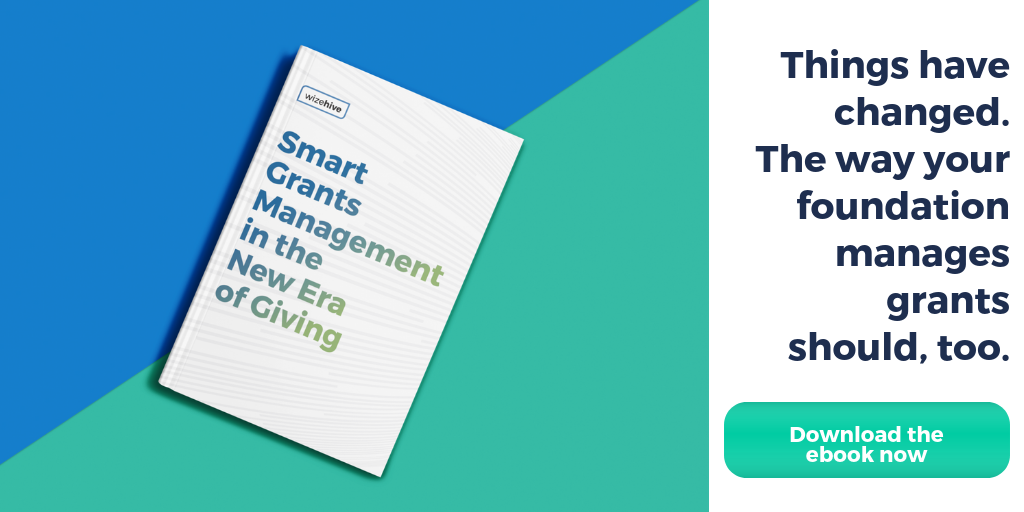The key to grant awarding decisions that make your program stronger and generates meaningful impact? Stronger relationships between your organization and your grantees. Begin this process from the start by using the application process to build understanding and trust.
As a grantmaker, your job is more than selecting applicants and projects to fund -- its determining the most valuable, impactful projects that will deliver results and change and align with your organization’s mission and goals. It’s a heavy hat to wear, and scrolling through countless application responses often is not enough to allow you to wear it well.
To make the best grant awarding decisions possible, you need more information. Actually, you need more than information. You need a relationship.
As you approach a new funding cycle, consider ways you can not only collect data from your applicants, but that you can get to know and build a relationship with your potential grantees. You can do this by rethinking the questions on your application, but what are some other fresh ideas that might apply to your organization that you haven’t considered?
Schedule site visits
It’s common for foundations and other funders to request a site visit before they approve funding for a grant. But, making it a standard part of the application -- or at least one last step for your final candidates -- allows grant applicants a chance to show off a program in a way that a online application cannot. Some key elements of a site visit that you might want to consider as part of your grant application, or as part of an upcoming visit, include:
-
Transparency: If site visits are a standard part of your process to assess an organization for possible funding, be transparent and explain your grant process. Let the organization know, as applicable, if the process is competitive — meaning does the site visit doesn’t automatically mean the organization is getting a grant, it may just be a standard part of your application or may be exclusive to final candidates.
-
Setting the schedule: A typical in-person site visit will last from 60 to 90 minutes. This includes meeting with staff and participants that are part of the organization’s activities. Before attending, understand who you’ll be meeting with during a site visit, their role, and the time allotted for the visit.
-
Sample site visit questions: Include sample questions that will be addressed during the site visit in your application, or locations or activities you might want to see. This not only helps prepare your applicants for the site visit, but gives you a basis for every site visit you complete so you can more easily compare your experiences when it comes time to award.
Incorporate interviews
We talk a lot about how storytelling is a great way for grantees to enhance their grant application and help grantmakers get to know their applicants and the people they could potentially fund, and it deserves repeating here. Storytelling, or interviews, are a valuable tool in any marketing mix and can help you connect better with donors, partners, applicants, and the community as a whole. Encourage your potential grantees to share stories or interviews of the people who have benefited from their organization’s work as part of the application process. How has this work impacted the community? Who was affected? This could be via video uploads in the applications, transcripts, or even better in-person interviews during your site visit.
And don’t settle on one interview from applicants. Encourage interviews of a variety of people for different stories and perspectives. Like we mentioned, these interviews and stories could even be used later for promotional materials and annual reports once your grantee is selected.
Consider eligibility requirements
Just as you aren’t going to be fast friends with everyone you meet, your organization is not going to be a great match for every grantseeker out there. And that’s okay! But why spend precious time reviewing applications that don’t even align with your organization’s mission, initiatives, or funding capabilities? You can help your review team have more time to spend with quality applications by establishing eligibility requirements and asking grantseekers to meet them before being allowed to complete the full application. We most often see such eligibility quiz functionality used among scholarship providers, but it makes sense in grantmaking as well. If there are things you know that will disqualify an application from being considered by your organization -- always or even for this particular program cycle -- ask about those things from the start. Those seekers who do not meet the criteria are alerted and save the time they would have spent on the application, and those who do are then moved to the full application. Your intake will be smaller but much higher in quality and allow you the time to really get to know these prospective partners.
Make your application a workshop
Similar to asking a job candidate to perform a writing assignment or presentation, engaging your applicants in a series of exercises with tools and frameworks to develop their application can give you a true sense of the organization you might fund. Workshopping allows applicants to showcase their application in real time. They can chart user journeys, budgets, stakeholders, potential pain points and opportunities. Applicants can receive real-time feedback on their “application” and tweak it even further. Such an interactive, collaborative approach can not only help you get to know your applicants, but can highlight strengths and weaknesses that would not be evident in a standard, static application submission. Workshopping application isn’t for all applicants, so consider timing and resources if you go this route.
